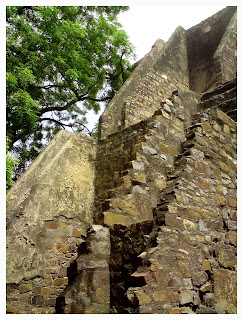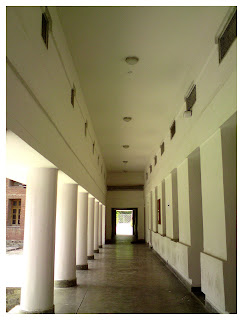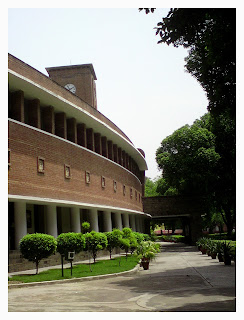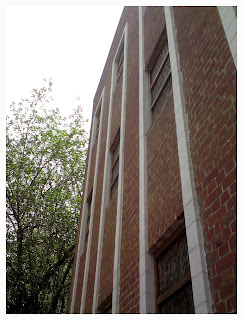Long time no see.
I'm back at vir.mueller, this time as a junior architect. I like the work, and get plenty of responsibility. I think it's a great place to work if you want to practice architecture- but that's just it. I'm not sure (I'm quite sure) I want to. Certainly I don't want to practice only architecture.
I'm interested in so much more. Research, writing, conversation, design, understanding what design can do for people. And as ever, the visual communication of all of this stuff. Layout and editorial and indesign still make me happy.
Graduate school;
aka confusion.
confusion
kənˈfjuːʒ(ə)n/
nounnoun: confusion; plural noun: confusions
1.
uncertainty about what is happening, intended, or required.
"there seems to be some confusion about which system does what"
synonyms: uncertainty, lack of certainty, unsureness, indecision, hesitation,hesitancy, scepticism, doubt, ignorance; More
a situation of panic or disorder.
antonyms: certainty
"the guaranteed income bond market was thrown into confusion"
synonyms: disorder, disarray, disorganization, disorderliness, untidiness, chaos,mayhem, bedlam, pandemonium, madness, havoc, turmoil, tumult,commotion, disruption, upheaval, furore, frenzy, uproar, babel, hurly-burly, maelstrom, muddle, mess, shambles; More
a disorderly jumble.
antonyms: order
"all I can see is a confusion of brown cardboard boxes"
2.
synonyms: jumble, muddle, mess, heap, tangle, entanglement, tumble, welter,litter, shambles More
the state of being bewildered or unclear in one's mind about something.
"she looked about her in confusion"
the mistaking of one person or thing for another.
synonyms: bewilderment, bafflement, perplexity, puzzlement, mystification,stupefaction, disorientation, befuddlement, muddle; More
"there is some confusion between ‘unlawful’ and ‘illegal’"
Many people have told me that confusion isn't essentially bad. At least I'm thinking beyond a pre-destined path. But right now, when in the midst of all this confusion? I just feel horribly stressed and tense and aaaaaaaah.
I want to do many things. How do I choose which of those things to master in?
Also, the etymology:
Sense of mingling, mixing, blending of my many, many (ill-defined) goals in life?
***
I've been considering pursuing a masters degree in graphic design for a little while now. I know I don't want to do an M.Arch, and I don't want to do only architecture. I think it's critical to acknowledge the larger field of design, and being in a multi-disciplinary environment where I can learn from everything is very important to me.
I've always been interested in the graphic arts and visual communication; I've volunteered for projects at school and I really try to focus on articulate presentation of my work.
I'm also inclined towards teamwork, research, and writing. I want to be a part of discussion and conversation on the relationship between design and society/ culture.
I think successful public discourse is as much about serious content as it is about effective communication. Working on creating a branding and communication strategy for Delhi Dallying has reinforced this. It's made me recognize the ability of good design to involve and engage our audience, and to provoke them to think. It is equally important for me to create content and to be able to successfully present it, often in order to promote the generation of further content.
Much of the work I have done as a student and young practitioner lies at the intersection of my personal interests, and I am deeply concerned with evolving a method of praxis that combines research, design and visual communication. I don't quite know what I want to do in life, but I want to be always learning. I quite possibly want to know everything.
I'm just so confused! What I want is to go to a great, vibrant city, be around brilliant people who are interested in all sorts of things, and I want to learn new skills, to hone my interest into something more practiced and concrete.
***
I hope to study and better understand the
dynamic relationship between the built environment and social behaviour, as
well as the effect of society/ culture on the design of spaces.
I
believe that architecture is as much a study of people as of spaces. I
understand spatial and social fabrics to be interdependent and adaptive. The
way we build and the way we live are deeply intertwined and affect and
accommodate together. They co-evolve.
As
architects and urban designers, we have the ability to add value to the social
and physical structures of user-generated cities. However, it is important to
first understand and establish connections between the social and urban systems
which govern living environments. By making ourselves aware of the richness and
complexity of societal and cultural linkages, we situate ourselves in a better
informed and more capable position when it comes to making policy and design
decisions. I also believe that familiarity with the economic, political and
cultural structure of a settlement allows us to place greater weightage on the
natural and spontaneous traditional knowledge pool of a community, and
encourages us to learn from this resource.
Such an approach is especially critical to
the development process of settlements not considered to be traditionally
“planned” or “organized.” These settlements form the majority of Indian
conurbations; examples include urban villages, “slums” and historical
districts.















































